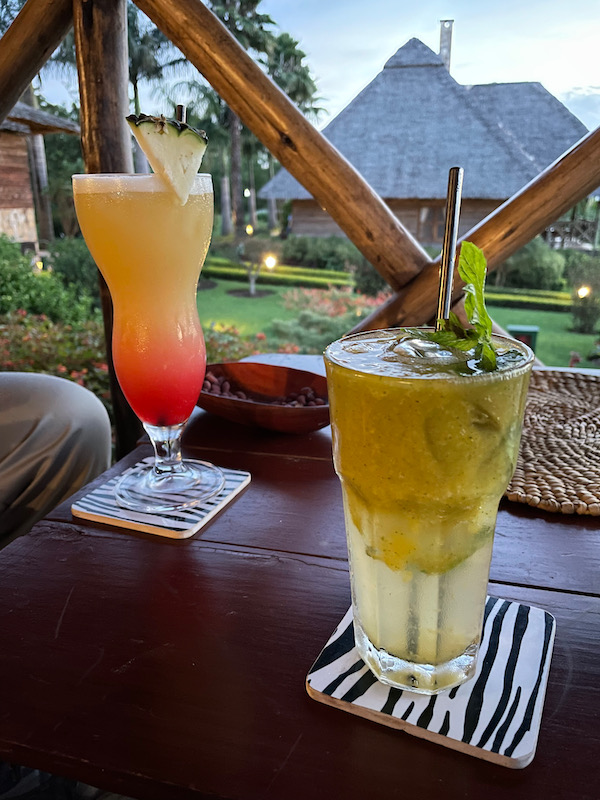Our Blog - Safari 2023 - Ngorongoro Crater, Tanzania
After an overnight on the crater rim, we headed down into the crater for a day-long game drive. The crater is the world's largest inactive, intact, and unfilled volcanic caldera. It was formed when a large volcano exploded and collapsed on itself 2-3 million years ago. From the crater rim to the floor is about 2,000 feet although the floor itself is at 5,900 feet above sea level. It is a pretty big crater as well, with the floor measuring 100 square miles. About 25,000 large animals live within the crater and with the height of the crater walls, there isn't much migration in-and-out of the crater. This actually causes a bit of a problem with inbreeding, especially within the population of lions.
One animal that we saw more of in the crater than anywhere else were Cape buffalo. These guys are HUGE ... males can weigh up to a TON although the average is around 1,600 lbs.
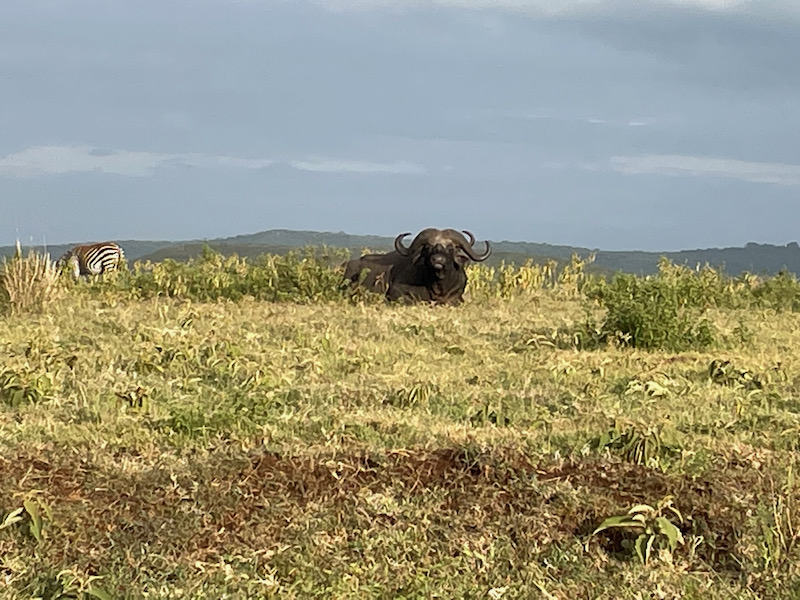

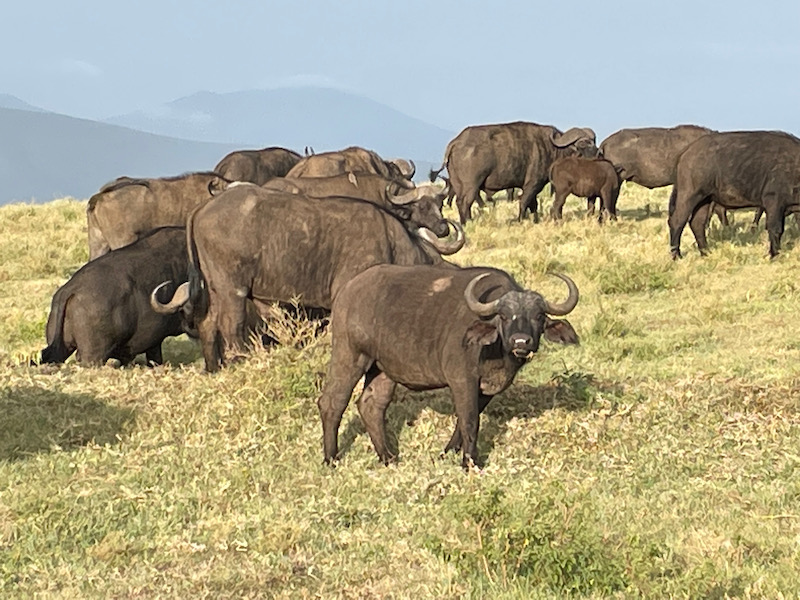
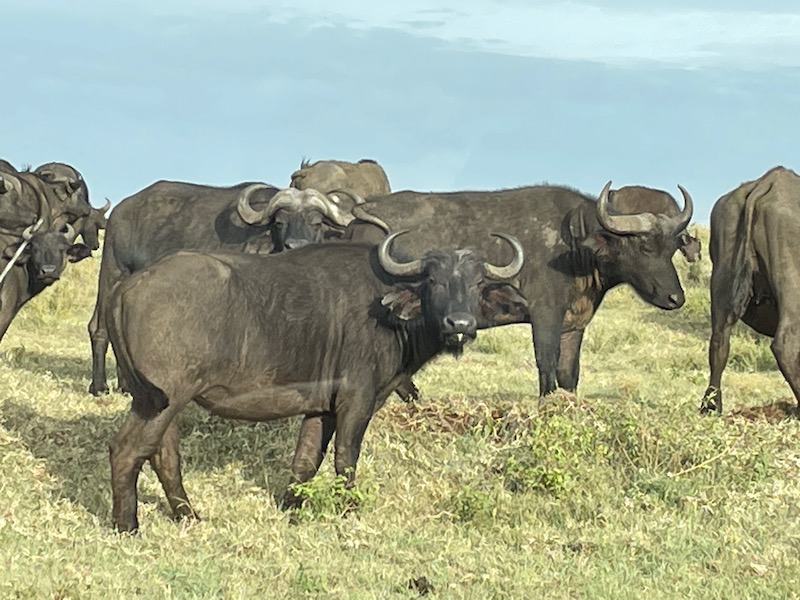
These two videos show part of a large herd crossing the road ... quite slowly in some cases ... stopping to look back at us.
I thought this was hilarious ... seems the one in the back-center had an itch!
A family of warthogs looking for food. Warthogs kneel on their front knees to feed because they have short necks and relativity long legs. They have adapted by developing special kneepads. Both male and female have tusks although the tusks on a male are much longer. The short video just shows one eating while kneeling.
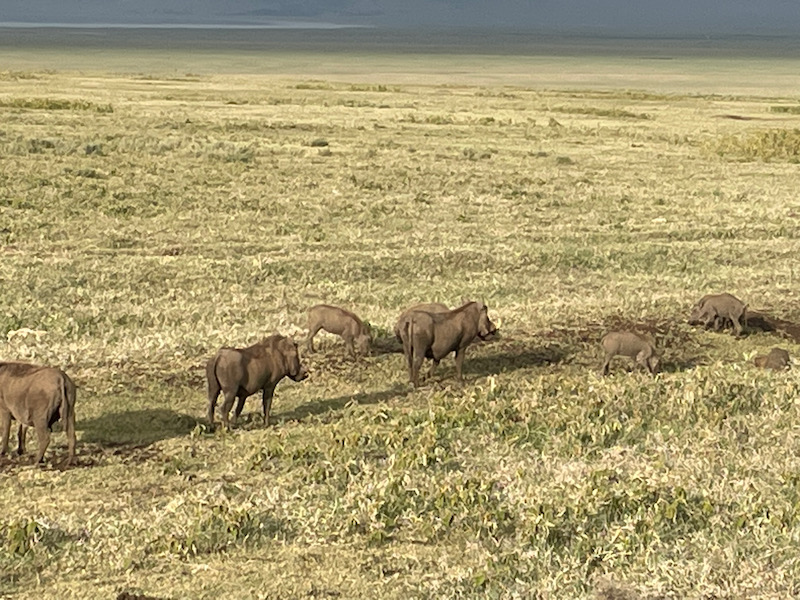


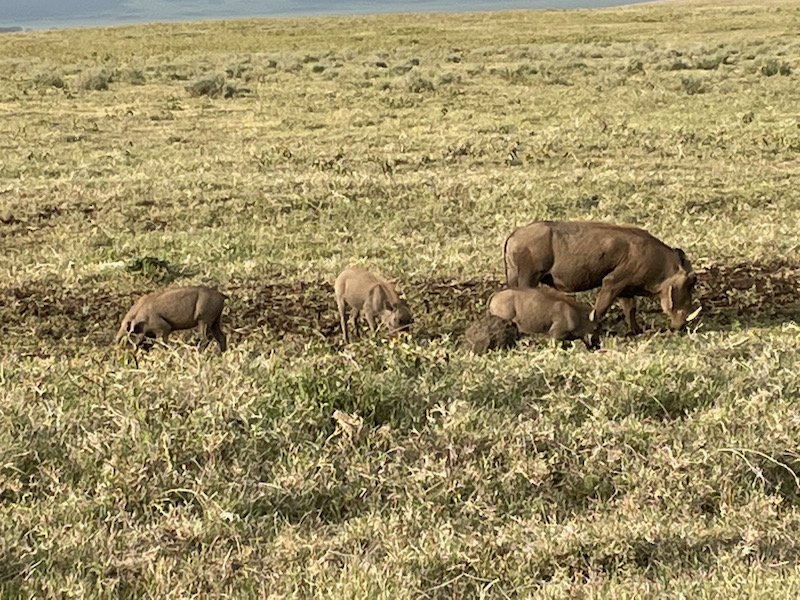

Within the crater, we so lots of wildebeests with newly-born calves, some just a few minutes to a couple hours old. We saw 2 of them actually giving birth (which Tom didn't think was a pretty sight).
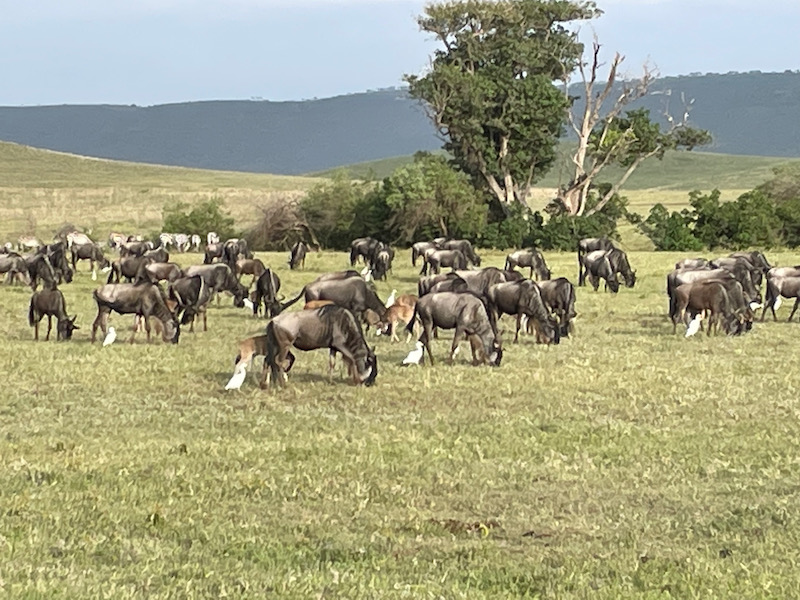
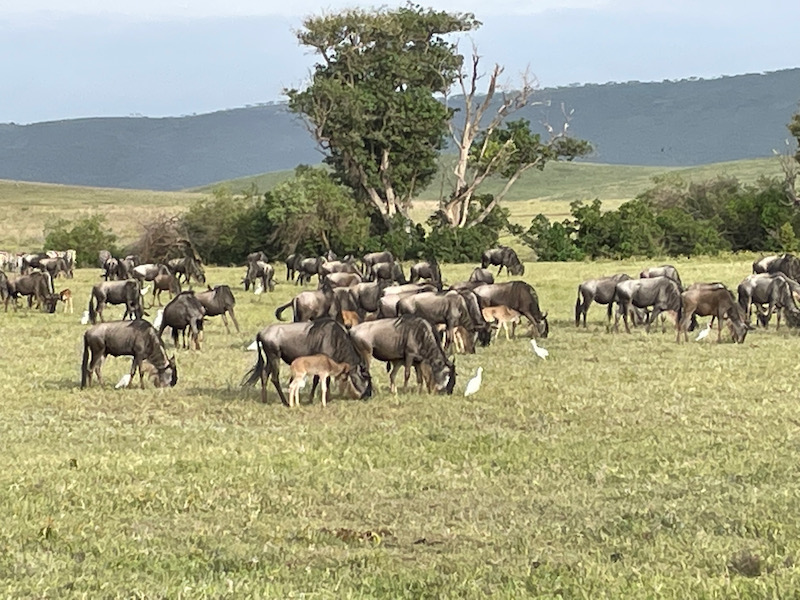
A few hyena were nearby, our guide said that they are actually looking for the placenta that gets delivered with the birth.
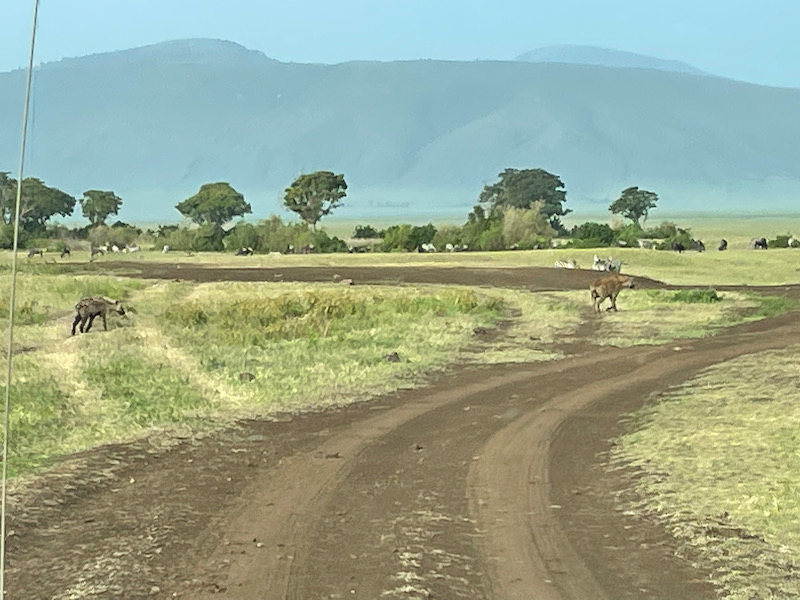


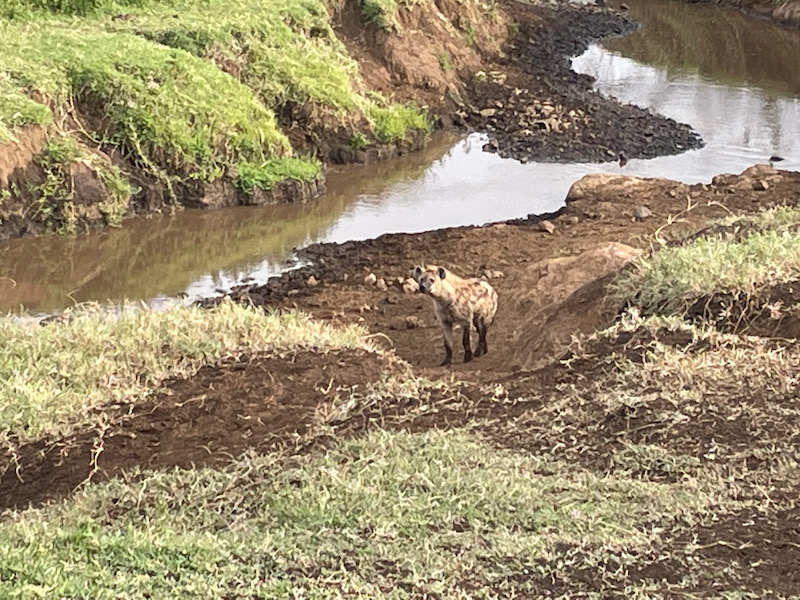
We also saw lots of zebras, many with foals that were probably a week or so old. Notice the difference in the 2 zebras in the 2nd picture ... I attempted to get a comparison picture between an adult (on the right) and a foal (on the left). See how the but of the foal seems to be "fuzzy" with short brown hair, while the adult on the right looks just black and white, without hair?


Birds don't always make pictures and videos easy, since they tended to not be too close to the road (and in the crater, you had to stay on the roads). These are African crowned cranes and they are the national bird of Uganda. You can always pick them out because the head has a crown of stiff golden feathers.

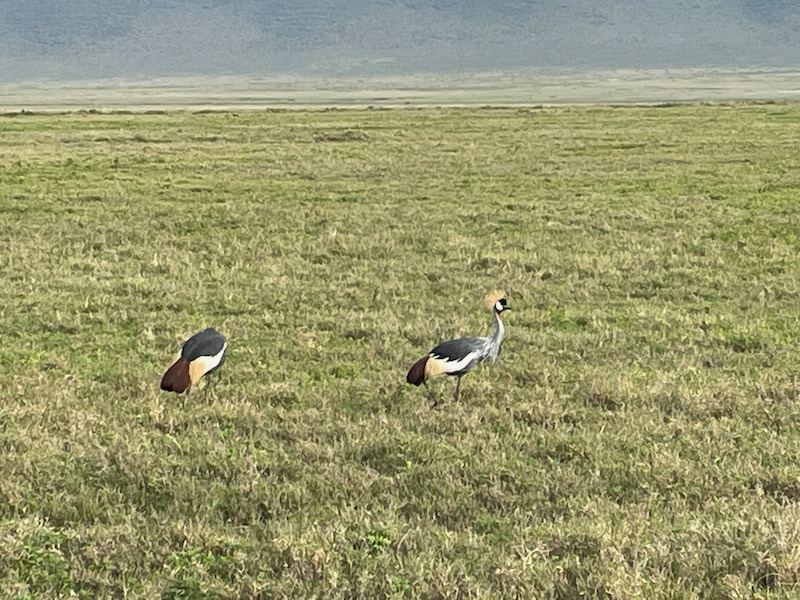
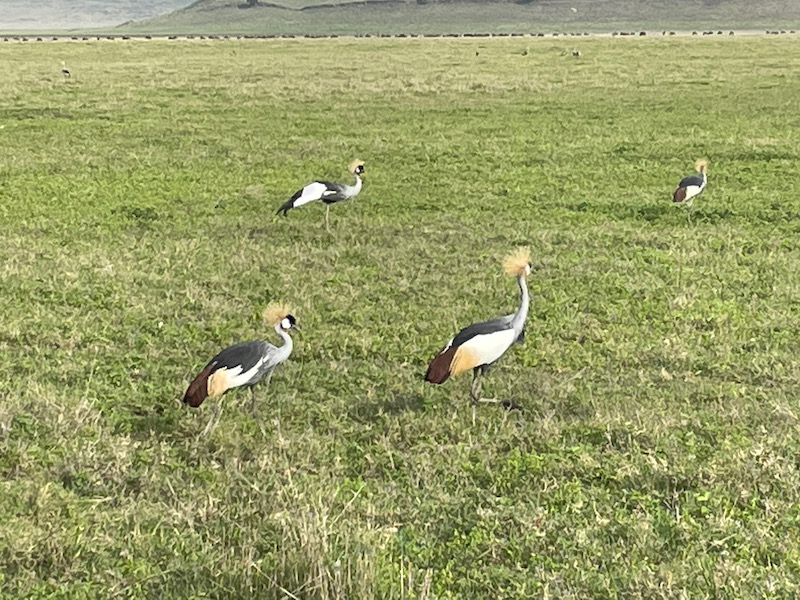
The crowned plover is easily recognized by its combination of brown and white colors. On its head, you can see a black crown with a white halo.
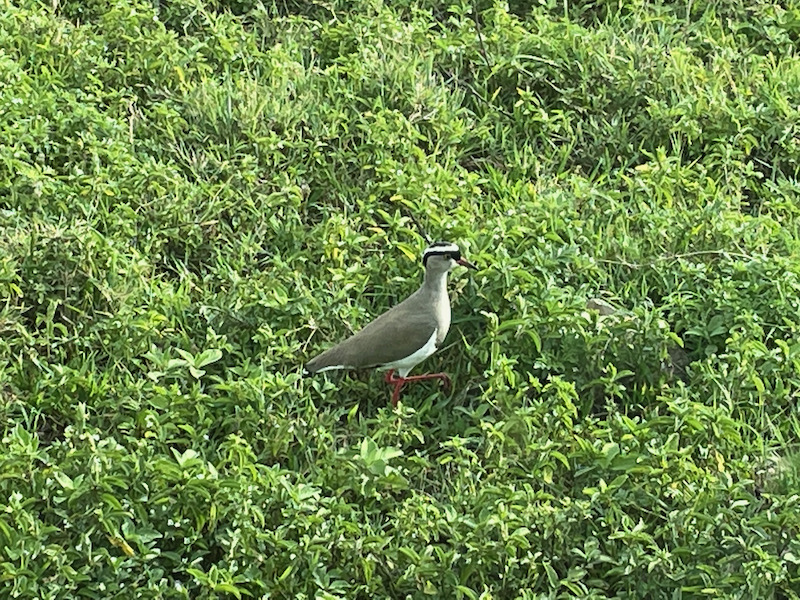
More wildebeests and their babies ... while there are definitely predators around, they didn't seem too concerned.

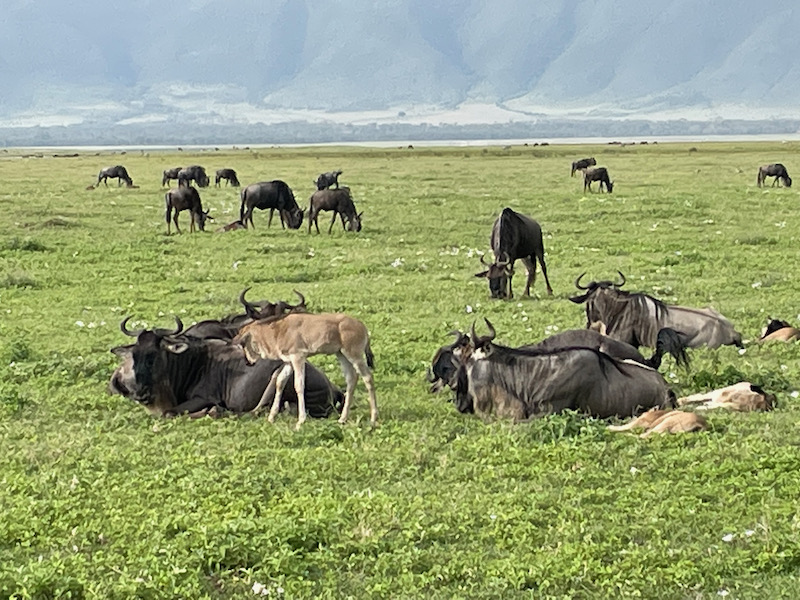
This video was just to try to show the sheer numbers of wildebeests here.
The babies are so cute!!

So this little one was just born, and within minutes, he is up on his feet! The video shows him hopping around!!

Another hyena running across our path
Then we headed to the Hippo pond. Unfortunately, we never saw the hippos come out of the water. At one point, we saw a few of them walking across the park, but only visible with the binoculars and then still very small.
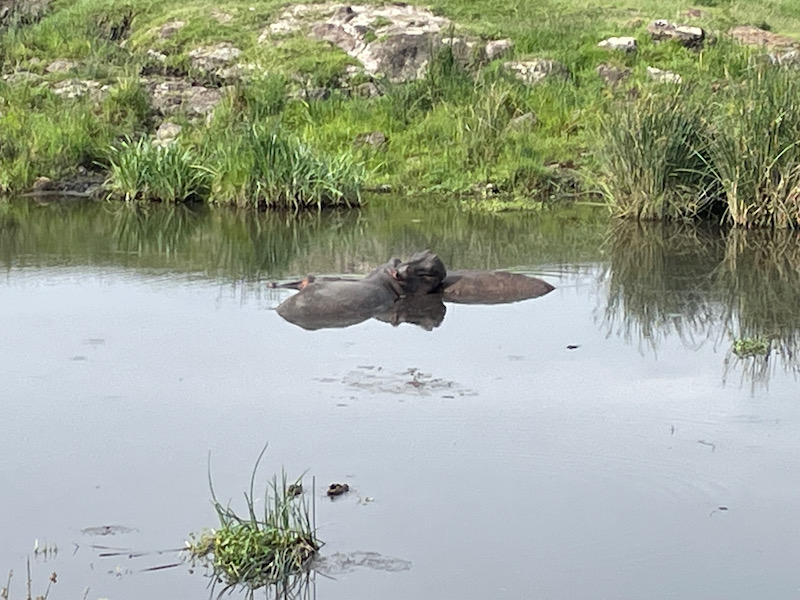
More zebras, and this time very close to the car. The 3rd picture I think really shows how the zebra foals have brown fur on their backs when they are very young.
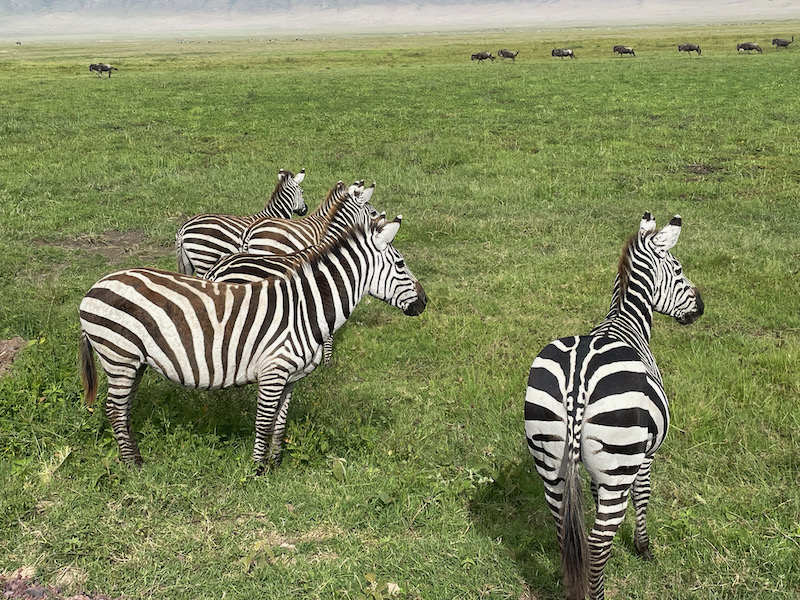
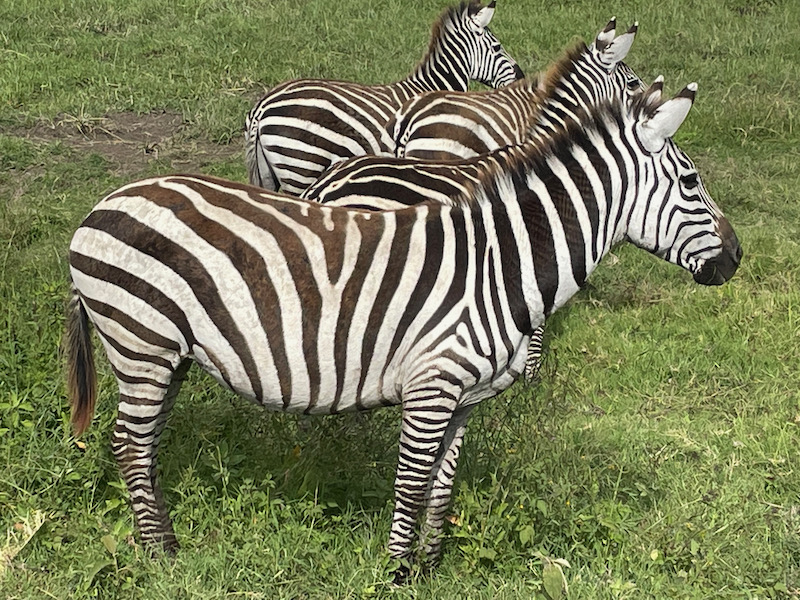
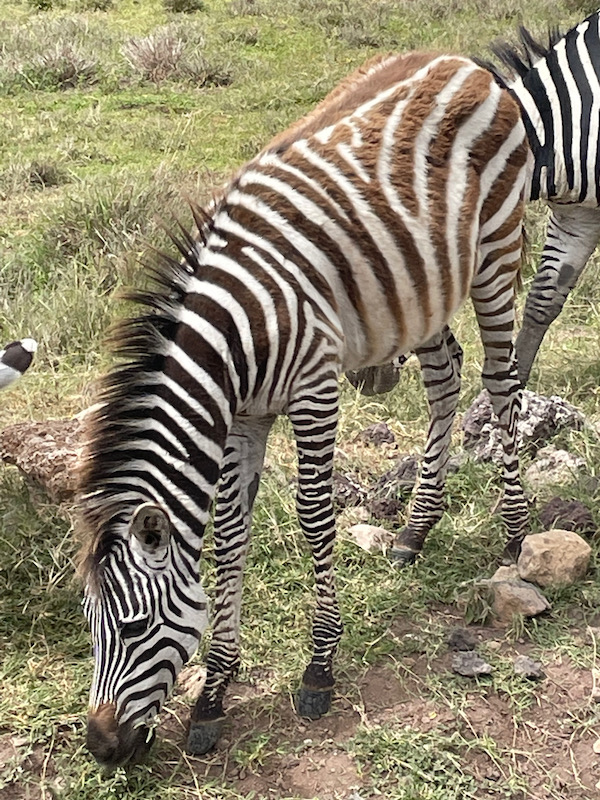
Then a really large warthog running (who knew they could run???), and then across the road.
Then we saw a female lioness with 2 cubs, coming up towards us. They ended up going down the embankment and through a culvert under the road. The video is quite cute, one of the cubs walks up and snuggles under mom's head.

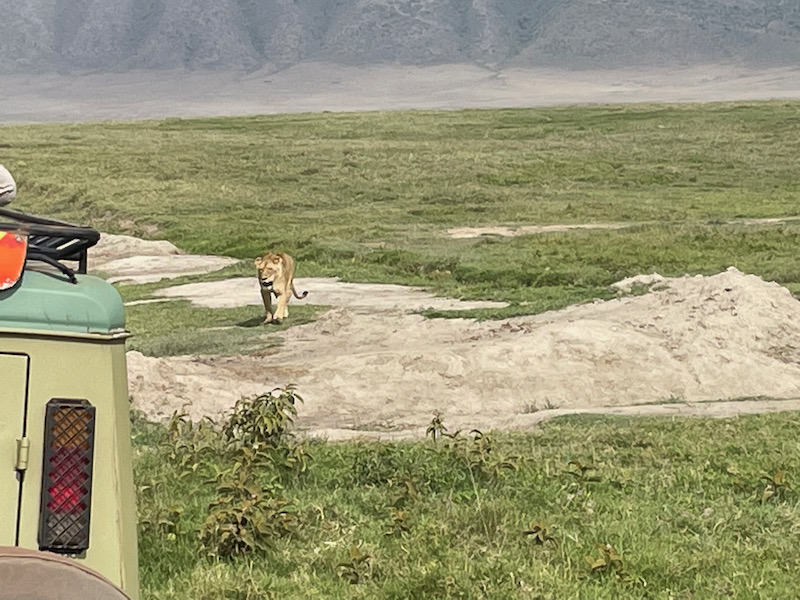

Look at the horns on this buffalo!
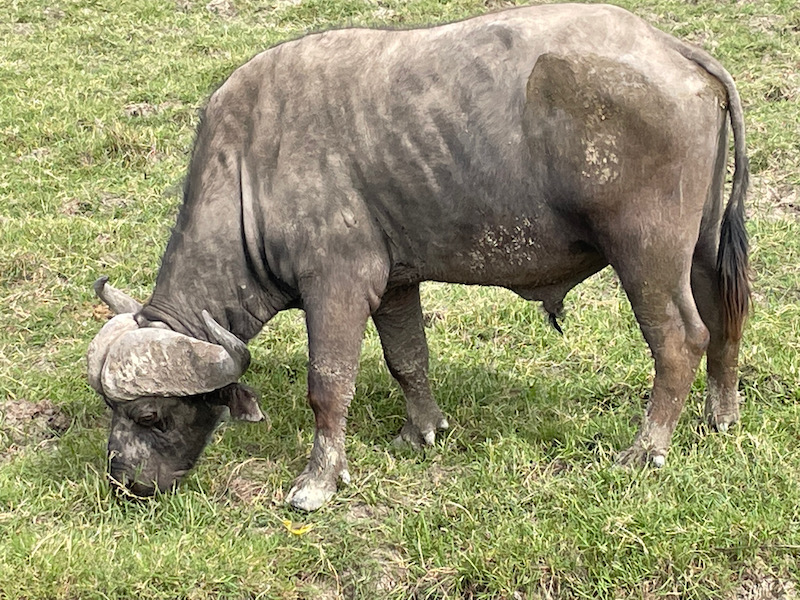
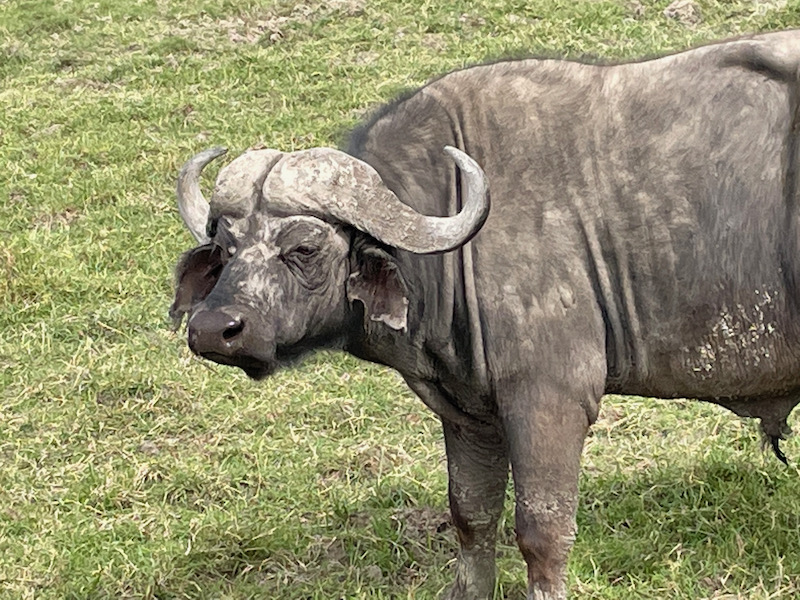
Normally, I don't think of lions as staying close to the road (or to people), but as we have seen a couple of times, they are happy to be around people and trucks when they provide shade. I guess this truck isn't leaving anytime soon! Now, one of the lions look like their left front paw is in a weird position. Tom was wondering if it is actually broken and we can't tell you, since we never saw the lion move.
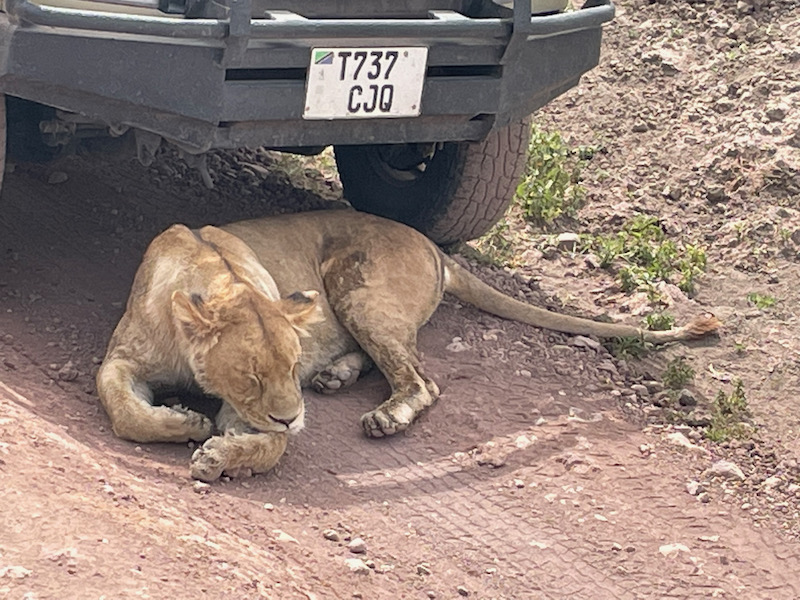
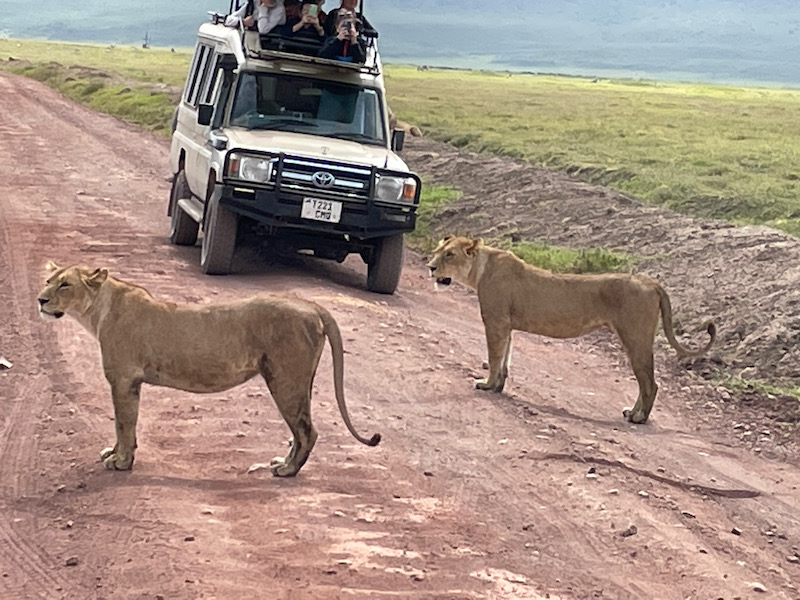

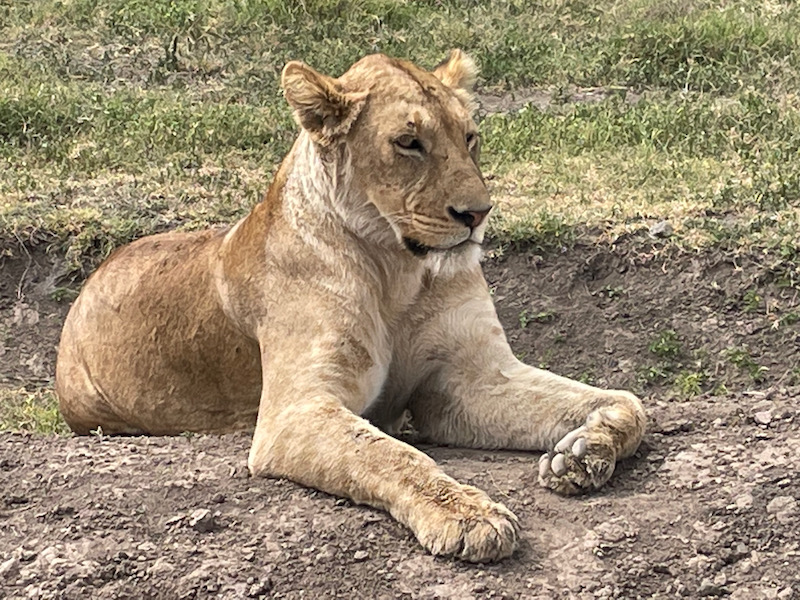
Elephants usually are in packs, but this one is on his/her own.

One thing we didn't know until now is that elephants are either right-handed or left-handed and our guide said you can tell by their tusks. The elephant will use one tusk more than the other for tasks like stripping bark from trees and digging in the ground. This preferred side will wear the tusk on that side down, so it will be shorter. I also thought the video did a good job of showing how they used their trunk to pick grass up and eat it.
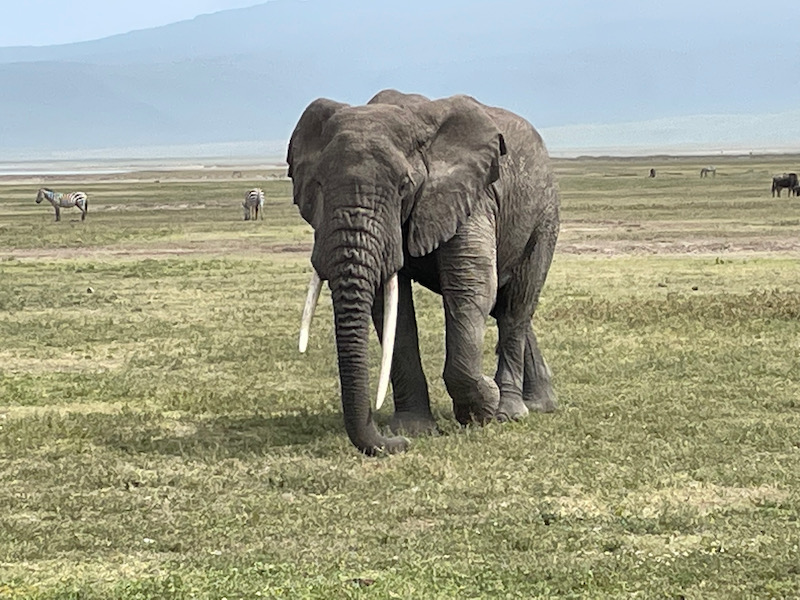
We then picked up a group of Marabou storks hanging out with another group of warthogs near a creek.


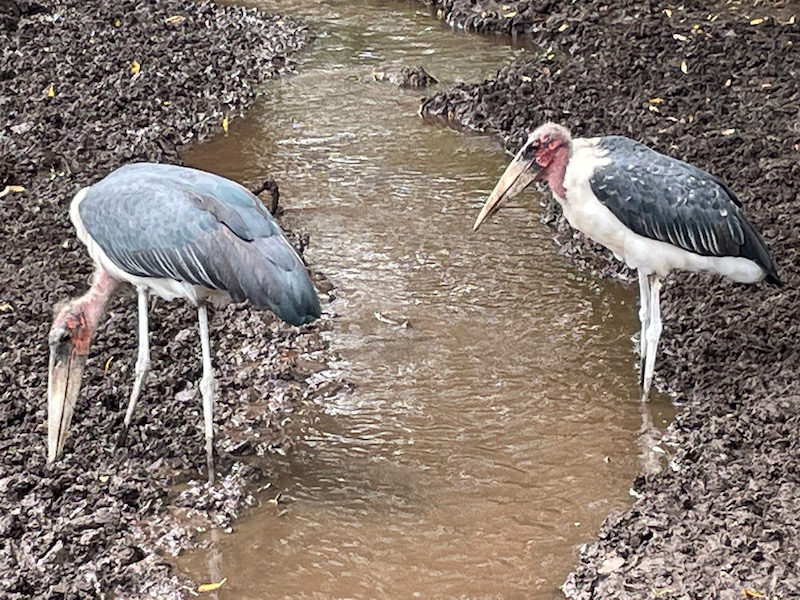
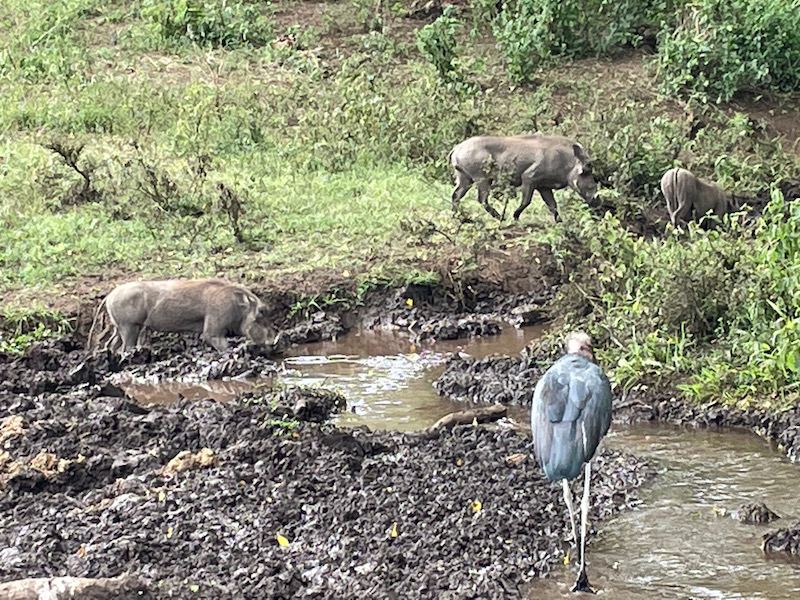
Not the easiest to see, but if you look closely, you can see that this is a mother Thomson gazelle with a baby (the baby is just to the left of the head, with a darker color.

More hippos, this time in a much larger lake, and in a much larger group of hippos. We also spotted several ostrich "couples"

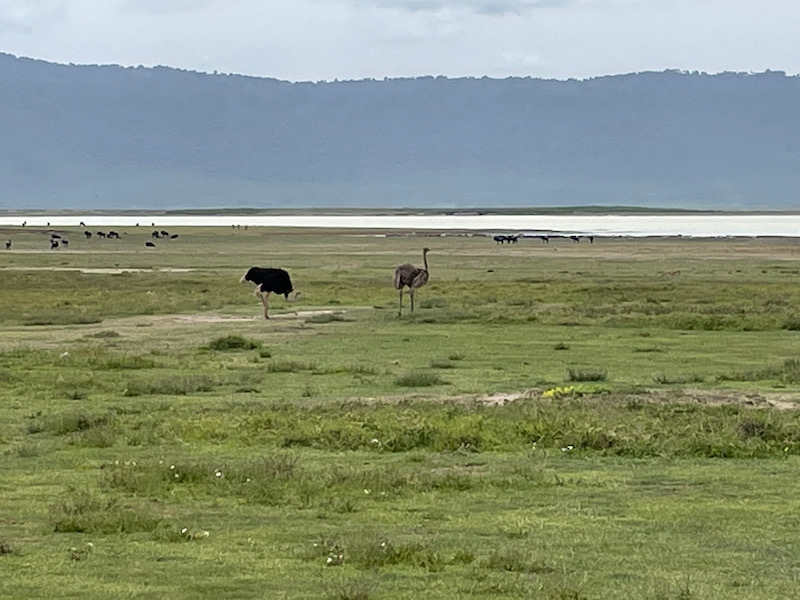
Then we headed to a picnic area for lunch, and found quite a few birds there. The first being guinea fowl (with the blue head) and then some very bright yellow and blue birds.
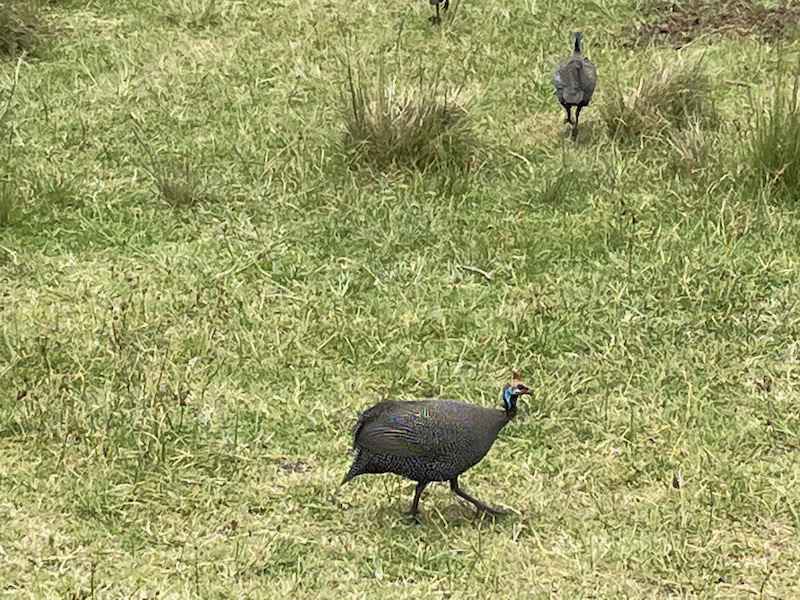
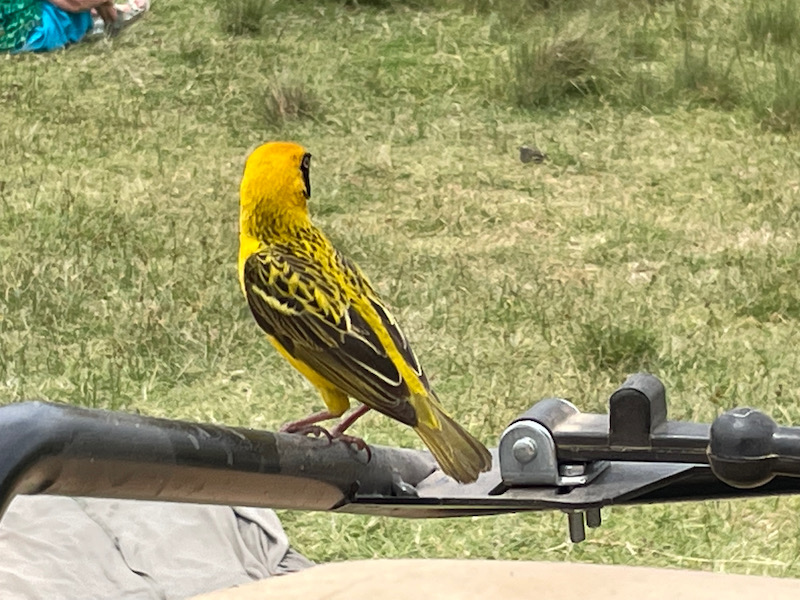
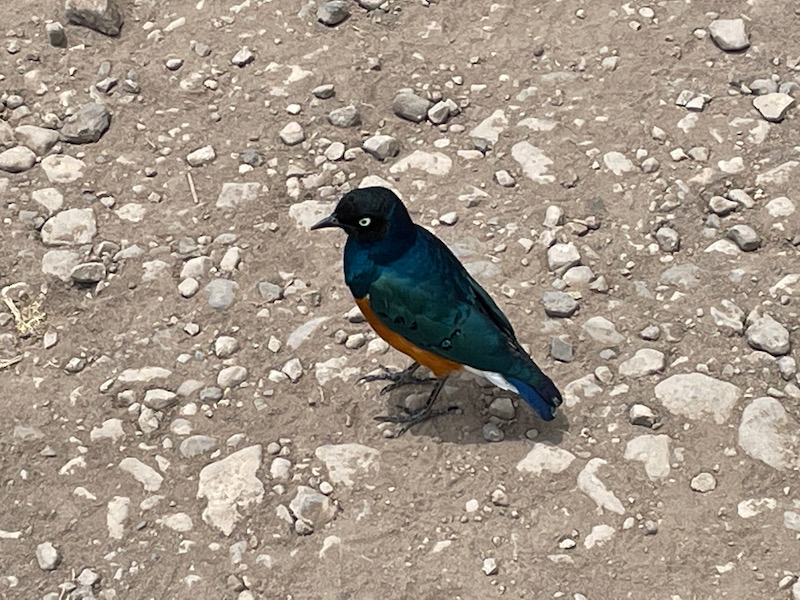
To give a bit of "size" to the elephants, this is an elephant skull that was near one of the rest areas in the crater and Tom for some perspective. Here you an also see the massive teeth that are left in the skeleton.
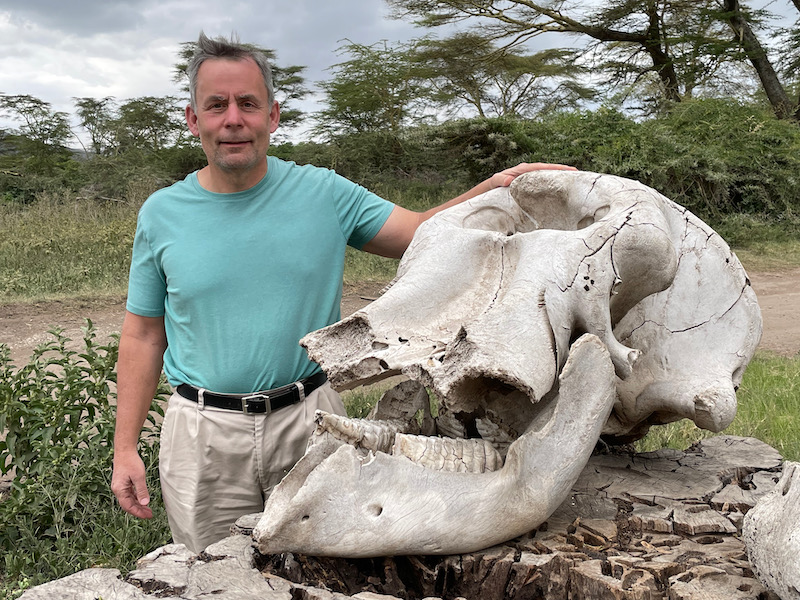
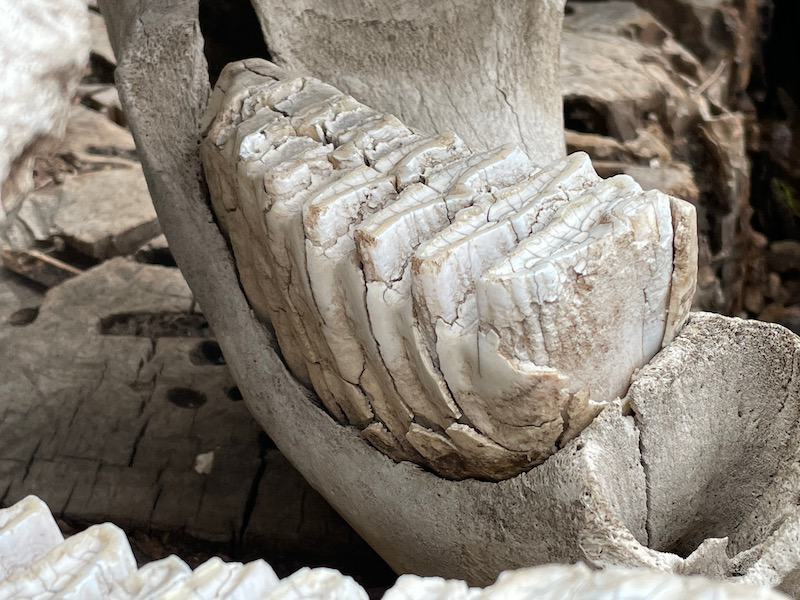
A storm started rolling through the crater, so we took the opportunity leave the crater, driving up to the top of the crater rim and then around the rim of the crater to our last hotel. This one was probably the swankiest one we stayed at. It had a huge main lodge with a high wooden roof. Then had a pool that overlooked the the valley (and there was also a spa down below the pool). You can also see the thatch-roofed cottages in the 3rd picture.


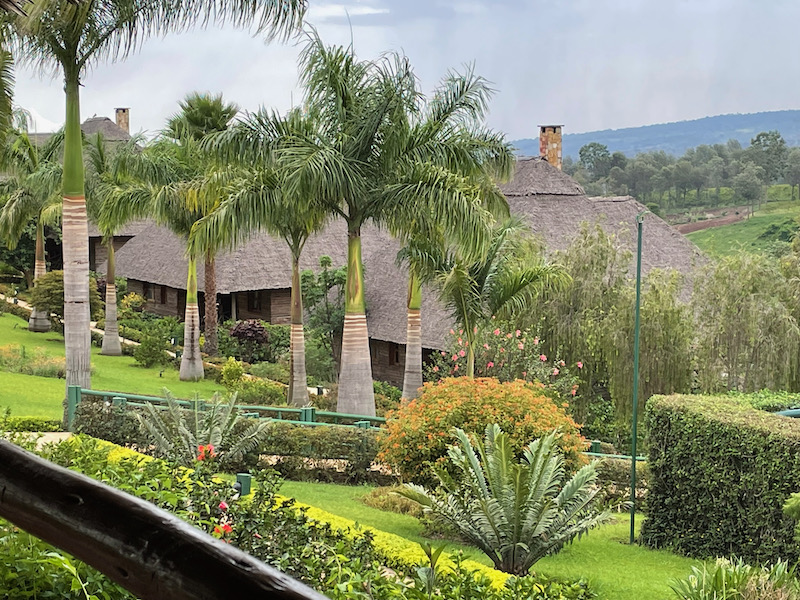
Our cottage had 2 rooms: the bedroom with bathroom and a living room (both with fireplaces).
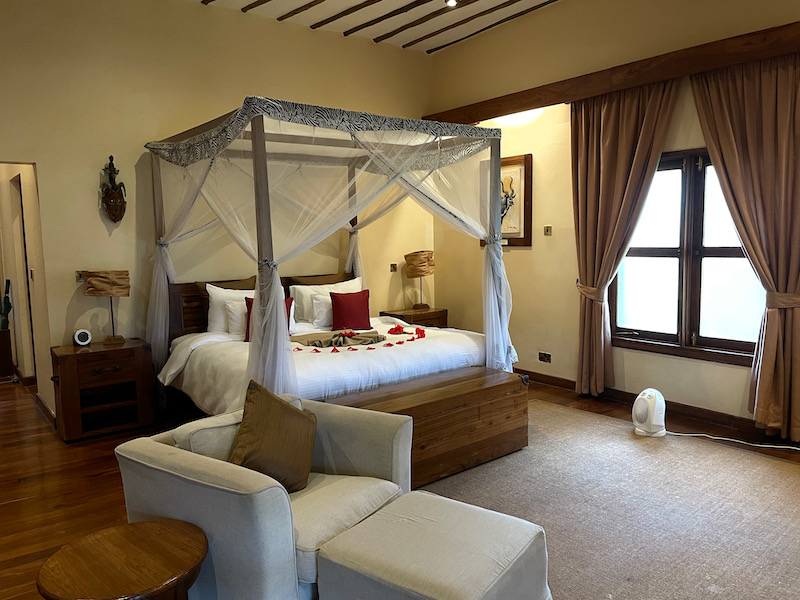
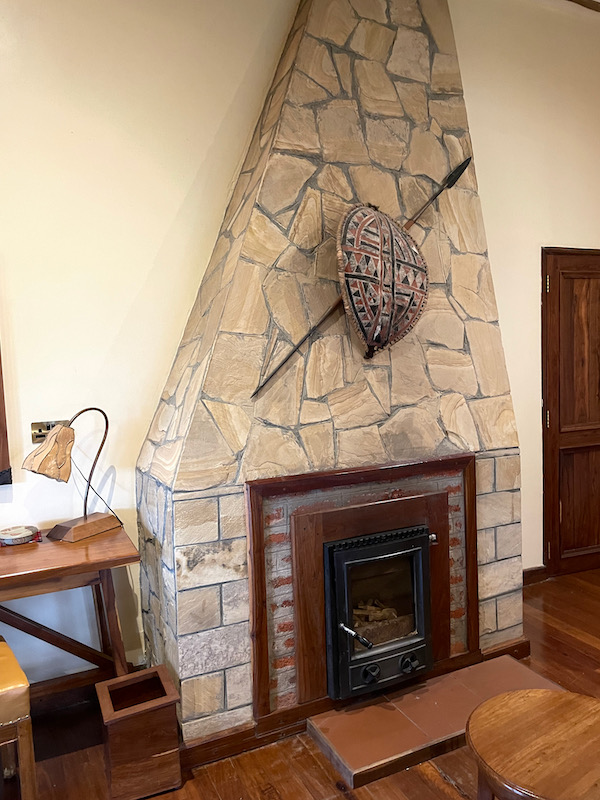
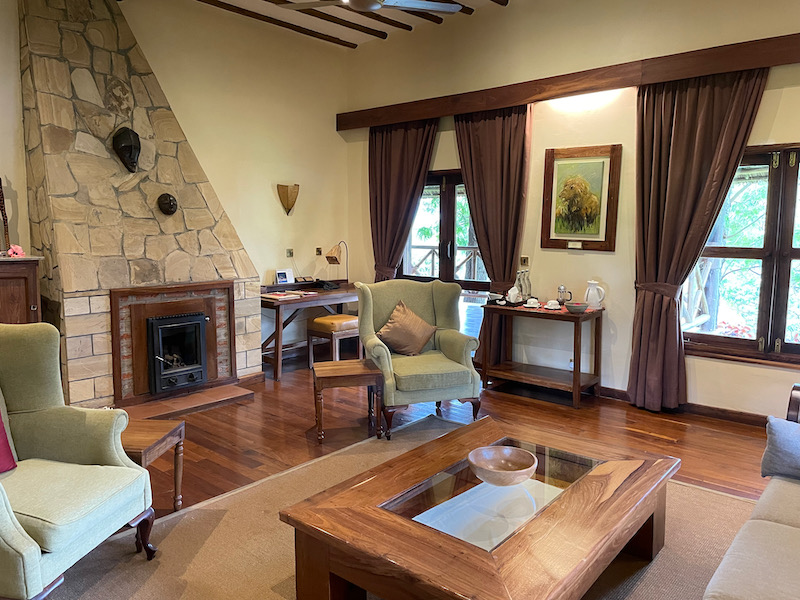
Then a large wooden deck to relax on.

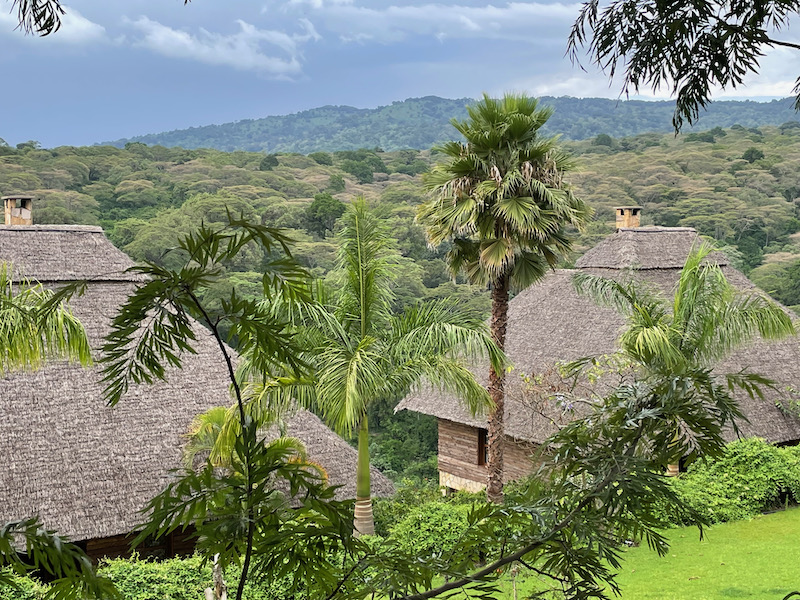
I thought this was so cute ...


We decided to truly relax and have a few cocktails on the deck and watch the sunset on our last day in Tanzania.
